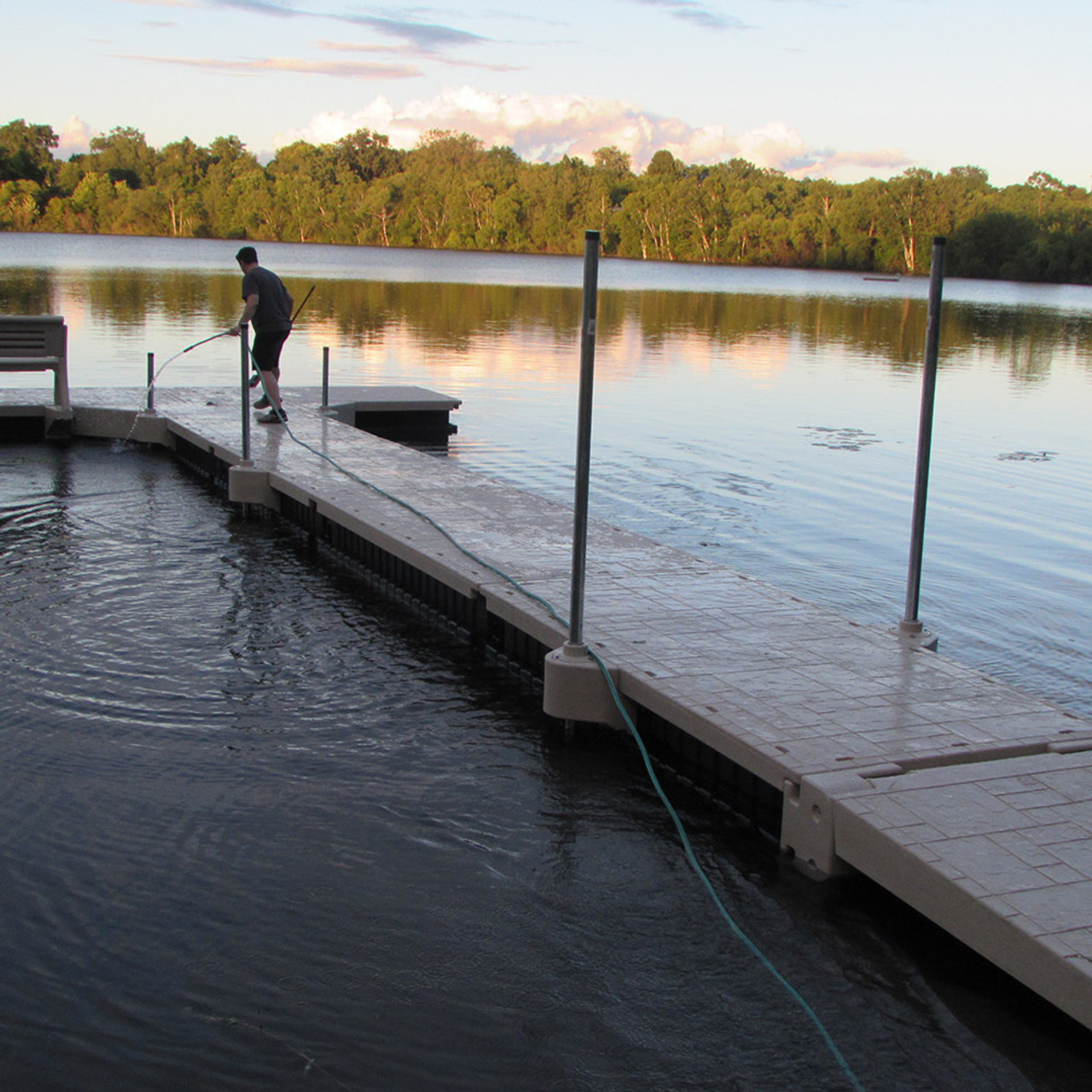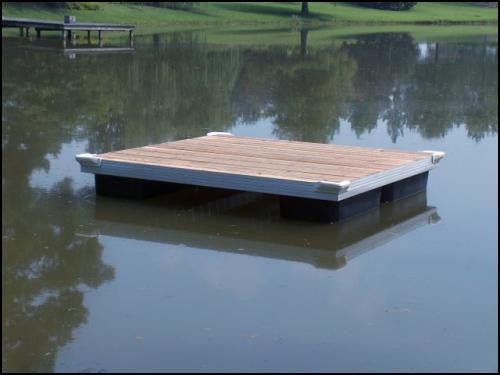Just How Floating Dock Company Expertise Can Raise Your Beachfront Experience
Just How Floating Dock Company Expertise Can Raise Your Beachfront Experience
Blog Article
Develop the Perfect Docking Service With Floating Docks
Floating docks present a versatile option for a variety of maritime demands, adapting effortlessly to rising and fall water degrees and varied vessel kinds. Their modular nature enables fast setup and relocation, yet the choice of suitable materials and design features is important for ensuring both capability and visual allure. As we discover the necessary components that add to the efficiency of floating docks, numerous crucial aspects pertaining to security and maintenance will emerge, questioning about how to maximize your docking experience. The succeeding discussion will illuminate these important considerations.

Advantages of Floating Docks
Floating docks offer various advantages that make them an optimal option for different maritime applications. Unlike taken care of docks, floating docks increase and loss with the tide, making sure regular access for vessels.
In addition, floating docks are usually less complicated and quicker to install compared to standard set frameworks. Their modular style allows for straightforward assembly and disassembly, promoting upkeep and relocation when essential. This versatility is especially beneficial for short-term applications or in environments where problems might change.
Floating docks additionally often tend to be a lot more environmentally pleasant, as they lessen interruption to the seabed and bordering water communities. Their buoyant nature lowers the danger of damage to aquatic life, promoting a much healthier environment. Furthermore, these docks can be customized to suit numerous vessel sizes, making sure that they satisfy particular functional requirements - floating docks.
Eventually, the combination of versatility, ease of setup, and ecological considerations makes floating docks a very effective option for a wide variety of maritime needs.
Choosing the Right Materials
Choosing the ideal materials for floating docks is critical to make sure resilience, longevity, and stability. The selection of products straight impacts the dock's performance in various environmental conditions, including exposure to water, sunlight, and prospective wear from aquatic website traffic.
Usual materials used for floating docks include aluminum, wood, and high-density polyethylene (HDPE) Aluminum is lightweight, corrosion-resistant, and requires minimal maintenance, making it an outstanding option for durability. Its first price can be greater contrasted to other materials.
Wood, while aesthetically appealing and providing a standard appearance, can be prone to rot and bug damage if not appropriately treated. For that reason, using pressure-treated wood or naturally long lasting species like cedar or redwood can mitigate these issues.
HDPE is a popular option because of its resistance to UV rays and chemicals, in addition to being eco-friendly. dock company. It is light-weight and offered in various colors, permitting modification
Eventually, the best product option will certainly depend upon details demands, consisting of budget plan, desired aesthetics, and ecological considerations. Cautious evaluation of these elements will certainly result in a resistant and successful floating dock remedy.
Design Factors To Consider for Security
When developing floating docks, guaranteeing security is a fundamental element that can significantly impact their capability and safety. Security in floating dock layout is influenced by different variables, including buoyancy, weight circulation, and the plan of elements. An optimum buoyancy system need to use materials that supply adequate lift while decreasing weight. This balance ensures that the dock remains above water, even under varying tons.
Weight circulation is critical; equally dispersing tons across the dock avoids tilting and enhances security. Broader layouts can use boosted stability, especially in rough water problems, while longer docks may call for extra supports to prevent drooping.
Another key factor to consider is the ecological impact, consisting of wave activity and wind. Incorporating attributes such as sidewalls or skirting can assist reduce the results of ecological forces, keeping security in unfavorable conditions. Inevitably, a mix of thoughtful design, product choice, and understanding of environmental factors will produce a floating dock that satisfies both stability and safety and security requirements.
Installment Tips and Techniques

Next, secure the necessary permits and abide by local policies, which may dictate installation approaches and ecological factors to consider. Involve a qualified professional experienced in floating dock installations if required. Use top notch products made for aquatic environments to improve durability and durability.
When placing Homepage the dock, straighten it identical to the coastline to help with simple gain access to. Ensure that the anchoring system is durable, utilizing concrete blocks or helical supports to support the dock against wind and wave action. It's vital to make up seasonal water degree changes, including potential ice movement in cooler climates.
During the installation, ascertain the dock's floatation and security before wrapping up the anchoring. On a regular basis evaluate the setup for any type of indications of wear or damage. By adhering to these techniques and tips, you can attain a safe, useful, and cosmetically pleasing floating dock installment that meets your needs.
Maintenance and Care Standards
Caring and maintaining for floating docks is critical to prolonging their life expectancy and making certain safe usage. Routine assessments need to be conducted to identify any type of indications of wear, damages, or aquatic development. Look for cracks, loose fittings, or stained areas on the dock's surface, as these problems can jeopardize architectural honesty.
Cleansing is essential. Use a pressure washer to remove algae, barnacles, and debris, which can gather with time. For stubborn growth, consider eco-friendly cleansing representatives that will not damage marine life.
Additionally, inspect the mooring lines and supports frequently to ensure they are secure and free from deterioration. Change any kind of torn or damaged lines quickly to preserve stability.
Throughout severe climate, such as storms resource or freezing conditions, take precautionary measures. Secure the dock with added mooring lines and, if practical, get rid of any kind of removable parts to stop damages.
Final Thought
In final thought, the execution of floating docks offers a flexible and reliable docking solution appropriate for numerous maritime applications. With proper setup and regular upkeep, floating docks can supply trusted and effective docking experiences for a broad range of vessels.
As we check out the important aspects that add to the effectiveness of floating docks, a number of essential variables regarding stability and upkeep will certainly emerge, raising concerns regarding how to optimize your docking experience. Unlike dealt with docks, floating docks increase and autumn with the trend, making sure consistent ease of access for vessels.When creating floating docks, making certain stability is a basic element that can considerably impact their functionality and security. Stability in floating dock layout is influenced by numerous factors, including published here buoyancy, weight circulation, and the setup of components. Eventually, a combination of thoughtful layout, material option, and understanding of environmental aspects will produce a drifting dock that fulfills both security and security needs.
Report this page